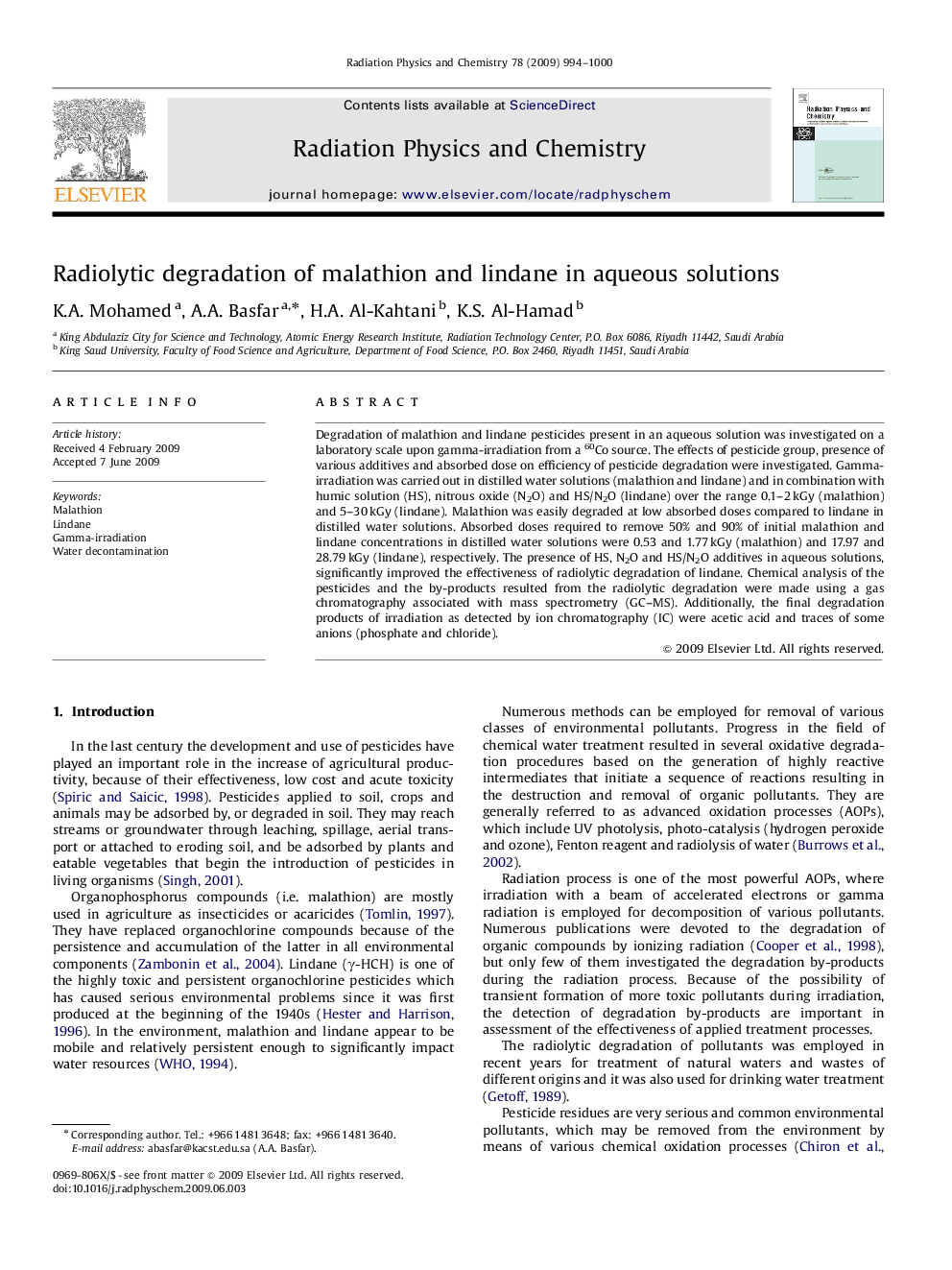| Article ID | Journal | Published Year | Pages | File Type |
|---|---|---|---|---|
| 1886766 | Radiation Physics and Chemistry | 2009 | 7 Pages |
Abstract
Degradation of malathion and lindane pesticides present in an aqueous solution was investigated on a laboratory scale upon gamma-irradiation from a 60Co source. The effects of pesticide group, presence of various additives and absorbed dose on efficiency of pesticide degradation were investigated. Gamma-irradiation was carried out in distilled water solutions (malathion and lindane) and in combination with humic solution (HS), nitrous oxide (N2O) and HS/N2O (lindane) over the range 0.1-2Â kGy (malathion) and 5-30Â kGy (lindane). Malathion was easily degraded at low absorbed doses compared to lindane in distilled water solutions. Absorbed doses required to remove 50% and 90% of initial malathion and lindane concentrations in distilled water solutions were 0.53 and 1.77Â kGy (malathion) and 17.97 and 28.79Â kGy (lindane), respectively. The presence of HS, N2O and HS/N2O additives in aqueous solutions, significantly improved the effectiveness of radiolytic degradation of lindane. Chemical analysis of the pesticides and the by-products resulted from the radiolytic degradation were made using a gas chromatography associated with mass spectrometry (GC-MS). Additionally, the final degradation products of irradiation as detected by ion chromatography (IC) were acetic acid and traces of some anions (phosphate and chloride).
Related Topics
Physical Sciences and Engineering
Physics and Astronomy
Radiation
Authors
K.A. Mohamed, A.A. Basfar, H.A. Al-Kahtani, K.S. Al-Hamad,
